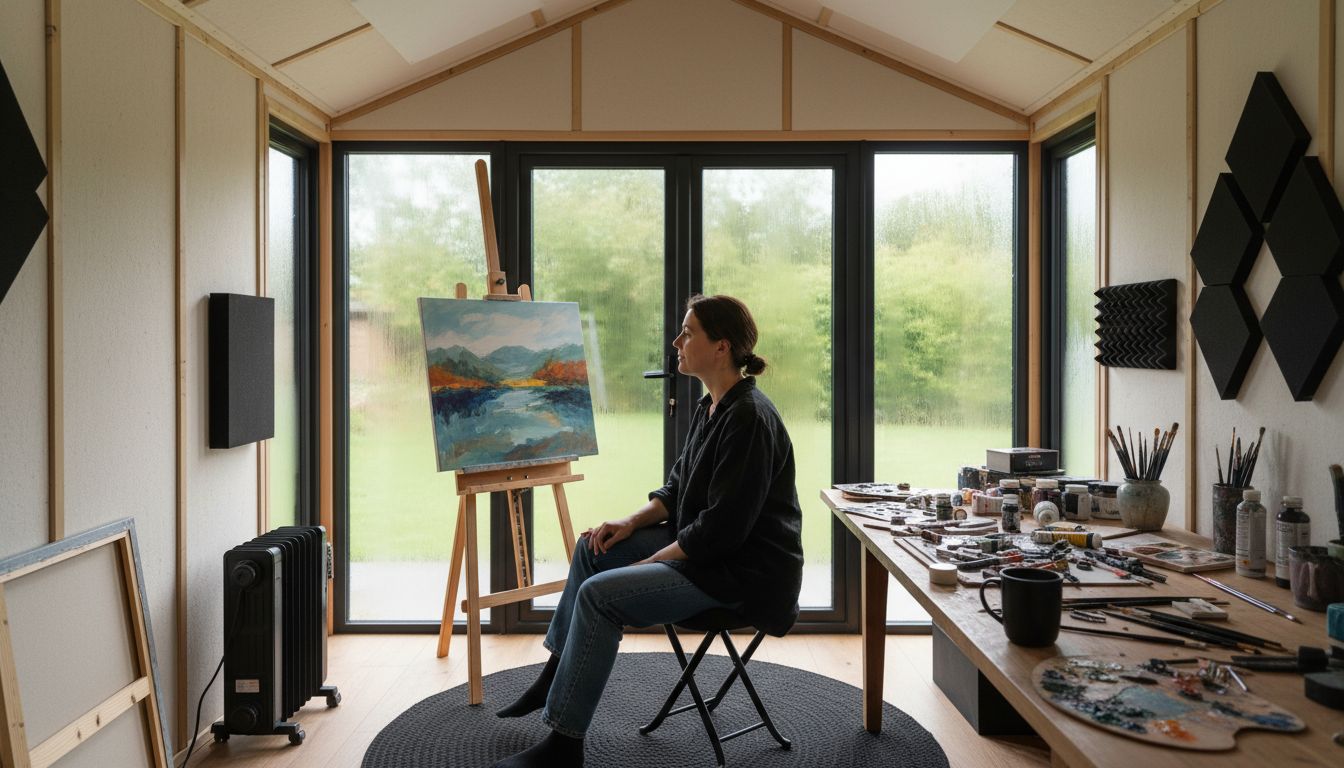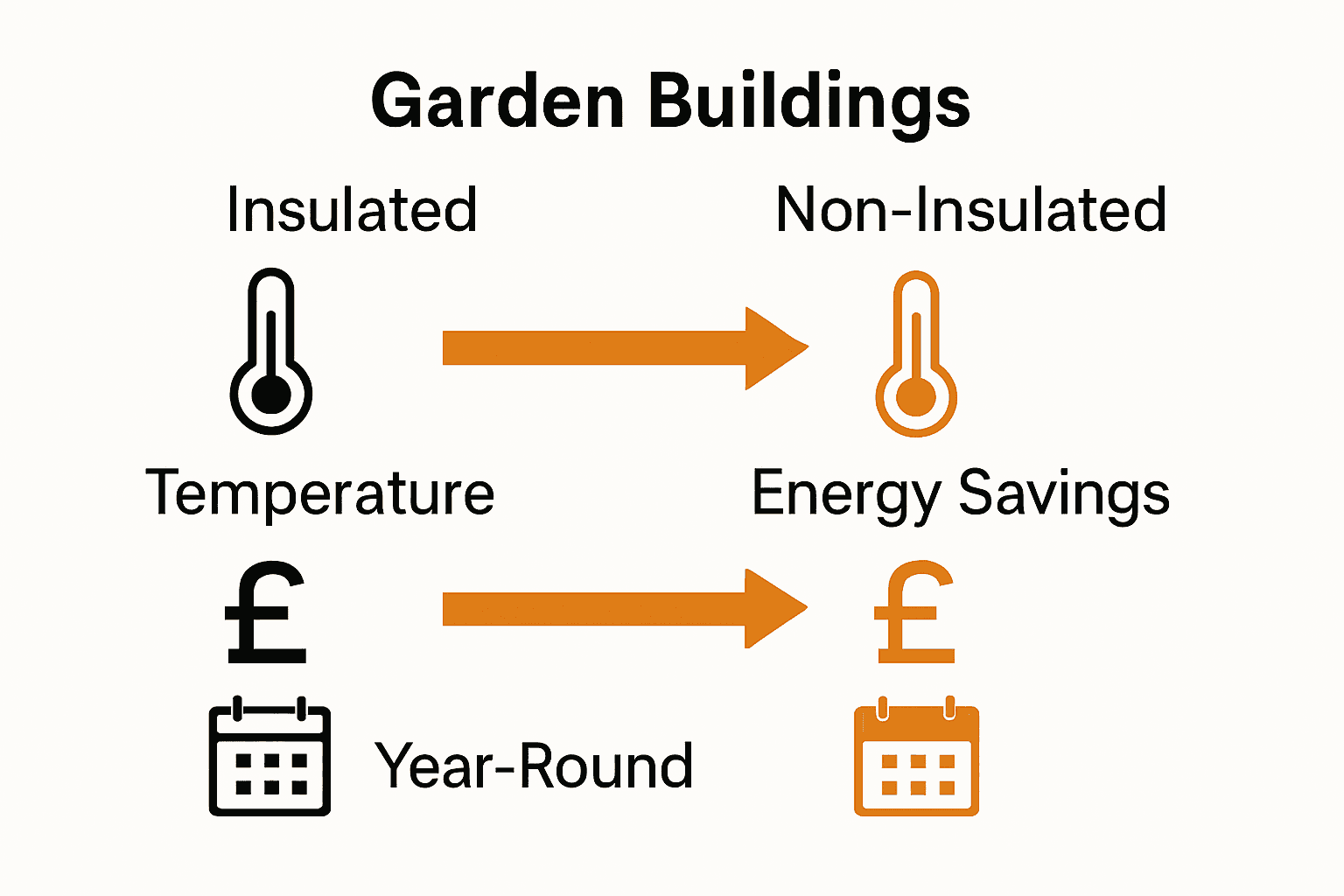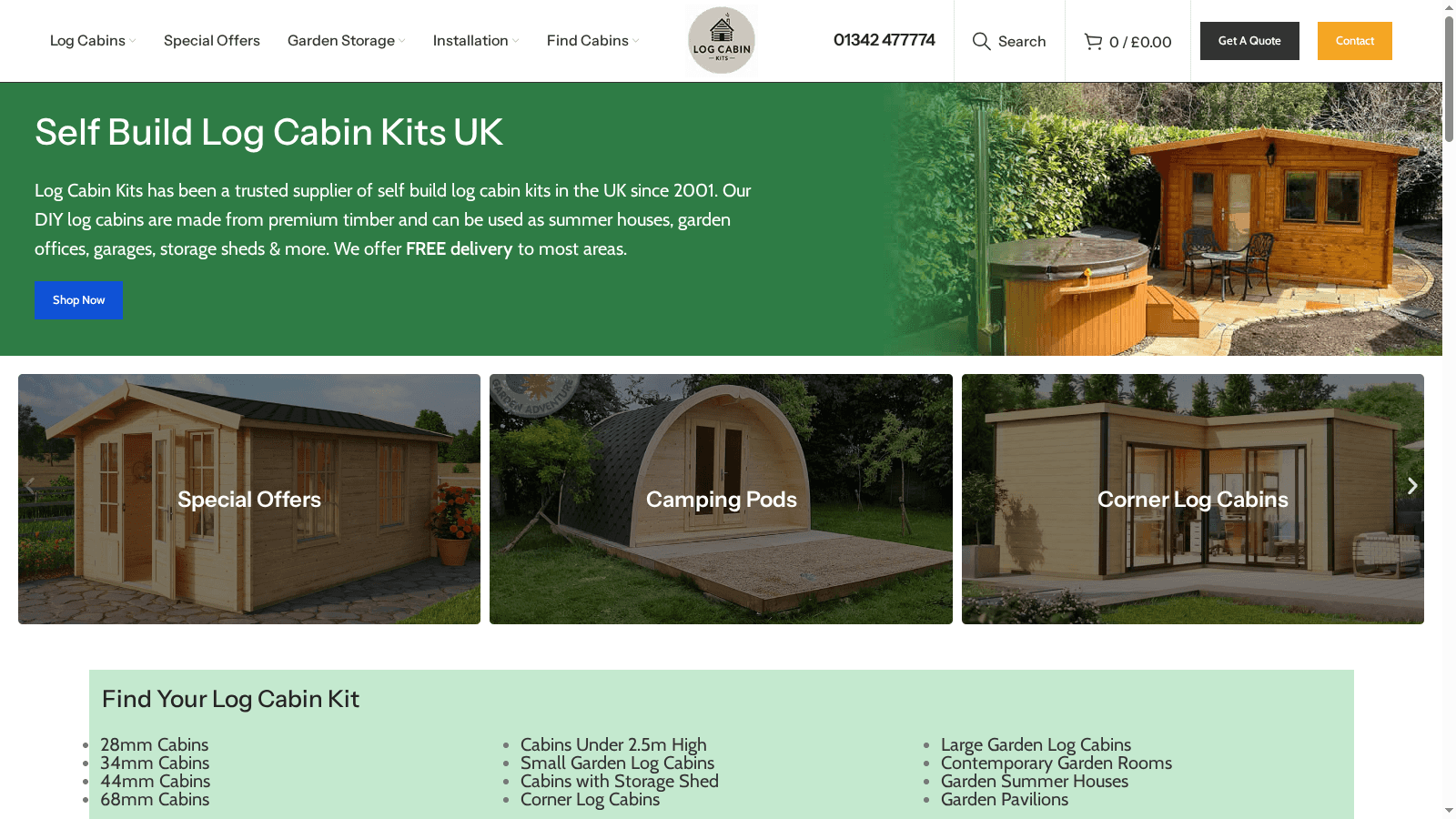Blog
Call Now 01342 477774
Insulated Garden Building: Complete Guide for the UK

Over 60 percent of UK homeowners are looking for ways to expand their living or working space without costly building extensions. Insulated garden buildings are transforming gardens into functional rooms that stay warm in winter and cool in summer. With advanced thermal technology, these structures go far beyond traditional sheds by creating comfortable spaces for work, exercise, or relaxation. Learn how insulated garden buildings deliver year-round usability, energy savings, and new lifestyle possibilities in the British climate.
Table of Contents
- Defining Insulated Garden Buildings In The UK
- Main Types Of Insulated Garden Buildings
- Key Insulation Features And Benefits
- Planning Permission And UK Regulations
- Cost Considerations And Installation Process
- Comparing Insulated Vs Non-Insulated Buildings
Key Takeaways
| Point | Details |
|---|---|
| Versatile Usage | Insulated garden buildings can serve as home offices, studios, gyms, and more, providing multifunctional spaces for homeowners. |
| Energy Efficiency | These structures feature advanced thermal insulation, which maintains comfortable temperatures year-round while reducing heating and cooling costs. |
| Planning Considerations | Homeowners must understand planning permission and regulations that apply to garden buildings, especially regarding size, use, and location. |
| Long-term Value | Investing in insulated buildings offers long-term benefits such as increased property value and usability, making them a smart choice for outdoor spaces. |
Defining Insulated Garden Buildings in the UK
An insulated garden building is a versatile outdoor structure designed to provide a comfortable, temperature-regulated space separate from your main residence. Unlike traditional garden sheds or summer houses, these buildings are engineered with advanced thermal properties to create usable spaces throughout the year. According to Wikipedia, these structures are often used as dedicated workspaces for remote workers or home-based businesses in the UK.
In the UK context, insulated garden buildings serve multiple purposes beyond simple storage. They can function as home offices, studios, gyms, relaxation spaces, or even additional living areas. The key distinguishing feature is their thermal efficiency, which involves strategic insulation in walls, floors, and roofs to maintain a consistent internal temperature. This makes them fundamentally different from traditional garden structures that offer minimal climate control.

Key characteristics of insulated garden buildings typically include:
- High-performance insulation materials
- Double or triple-glazed windows
- Robust weatherproof construction
- Ability to maintain comfortable temperatures in both winter and summer
- Potential for year-round usage without significant heating or cooling costs
For those considering exploring insulated garden rooms in more depth, understanding these structures as more than just garden accessories is crucial. They represent a sophisticated solution for expanding living and working spaces while maintaining comfort and energy efficiency in the ever-changing British climate.
Main Types of Insulated Garden Buildings
Insulated garden buildings in the UK offer diverse options to suit different needs and preferences. These structures have evolved from simple storage sheds to sophisticated, multifunctional spaces that can transform how homeowners utilise their outdoor areas. Whether you’re seeking a professional workspace or a personal retreat, understanding the main types can help you make an informed decision.
Garden Offices represent one of the most popular types of insulated garden buildings. Designed specifically for remote workers and entrepreneurs, these structures provide a dedicated, professional environment separate from home distractions. Explore some inspiring examples of garden offices that showcase how these spaces can be both functional and aesthetically pleasing.
The main types of insulated garden buildings include:
- Home Office Buildings: Fully equipped workspaces with professional amenities
- Studio Spaces: Creative areas for artists, musicians, or crafting enthusiasts
- Fitness and Wellness Rooms: Personal gyms or meditation spaces
- Recreational Rooms: Entertainment areas or relaxation zones
- Hobby Workshops: Dedicated spaces for woodworking, painting, or other creative pursuits
When considering different types of garden offices, it’s crucial to evaluate your specific requirements. Each type offers unique benefits, from enhanced productivity to personal wellness.
Key Insulation Features and Benefits
Thermal insulation is the cornerstone of modern garden buildings, transforming these structures from simple outdoor spaces into year-round functional environments. The right insulation does more than just keep you warm – it creates a sophisticated, energy-efficient space that adapts to the unpredictable British climate. Learn more about calculating heat loss rates to understand the critical role of proper thermal management.
The key insulation features that distinguish high-quality garden buildings include advanced materials and strategic design elements. Multi-layer insulation systems typically incorporate combinations of materials like mineral wool, closed-cell foam, and reflective barriers. These work together to create a thermal envelope that minimises heat transfer, reduces energy consumption, and maintains a consistent internal temperature regardless of external weather conditions.
Key benefits of comprehensive insulation include:
- Significant reduction in heating and cooling costs
- Enhanced acoustic performance, reducing external noise
- Improved moisture control and prevention of condensation
- Extended usability throughout all seasons
- Increased property value and aesthetic appeal
Understanding fire safety is equally crucial when considering insulated garden buildings. Exploring fire safety considerations can help you make informed decisions about materials and design that not only provide thermal efficiency but also ensure the safety of your investment. The right insulation is about creating a comfortable, sustainable, and secure space that seamlessly integrates with your lifestyle and property.
Planning Permission and UK Regulations
Navigating the complex landscape of planning permissions for insulated garden buildings can be challenging for UK homeowners. According to Wikipedia, the regulations are nuanced, with different requirements depending on the building’s intended use. Typically, garden offices used solely as home studies do not require planning permission if they are similar in size and construction to a garden shed.
Permitted Development Rights play a crucial role in determining whether you need formal planning permission. Most garden buildings fall under these rights, which allow construction without explicit local authority approval. However, several key factors can trigger the need for a full planning application, including the building’s size, location, and intended use. Understanding common planning permission mistakes can help you avoid potential legal complications.
Key considerations for planning permission include:
- Maximum height restrictions (typically 2.5 metres for buildings near property boundaries)
- Total coverage area of your garden by additional structures
- Distance from property boundaries
- Intended primary use of the building
- Potential impact on neighbours’ amenities
For those looking to create a garden building that requires minimal bureaucratic intervention, careful planning is essential. Exploring detailed planning guidelines can provide comprehensive insights into local regulations. Remember that while most garden buildings can be constructed under permitted development rights, commercial use or significant alterations will likely require formal planning permission from your local authority.
Cost Considerations and Installation Process
Budgeting for an insulated garden building involves more than just the initial purchase price. Homeowners must consider multiple financial aspects, from foundation preparation to long-term maintenance and potential energy savings. Explore fully insulated cabin options to understand the comprehensive pricing landscape and find solutions that match your budget and requirements.
The installation process typically involves several critical stages that impact overall costs. Groundwork and preparation are fundamental, requiring a level, stable foundation that can support the structure’s weight and provide adequate drainage. Professional installation teams will assess your specific site conditions, potentially recommending concrete bases, ground screws, or reinforced platforms depending on your garden’s terrain and the building’s intended use.
Key cost components to consider include:
- Initial purchase price of the garden building
- Foundation and site preparation expenses
- Electrical and utility connection costs
- Insulation and internal finishing
- Delivery and professional installation fees
- Potential ongoing maintenance expenses
- Optional extras like external decking or additional features
For those seeking a comprehensive understanding of garden building investments, exploring detailed planning guidelines can provide crucial insights into potential hidden costs and regulatory considerations. Smart homeowners approach these projects by obtaining multiple quotes, understanding full lifecycle costs, and planning for both immediate expenses and long-term value enhancement to their property.
Comparing Insulated vs Non-Insulated Buildings
Thermal performance is the critical differentiator between insulated and non-insulated garden buildings. According to Hanson Steel Buildings, insulated structures offer protection from condensation and external elements, making them suitable for year-round use, unlike non-insulated alternatives that may become uncomfortable in extreme weather conditions.
Insulation thickness plays a pivotal role in determining a building’s functionality. White Rose Buildings highlights that buildings with 40mm insulated walls and roofs ensure usability across various weather conditions, providing enhanced comfort and energy efficiency that non-insulated structures simply cannot match.
Key differences between insulated and non-insulated garden buildings include:
- Temperature regulation capabilities
- Condensation prevention
- Energy efficiency and heating costs
- Acoustic performance
- Long-term durability and material preservation
- Potential for year-round usage
- Overall comfort and livability

Exploring fully insulated cabin options can help you understand the comprehensive benefits of choosing an insulated garden building. While non-insulated structures might appear more affordable initially, the long-term advantages of insulation – including reduced energy costs, improved comfort, and extended usability – make them a smart investment for UK homeowners seeking versatile outdoor spaces.
Discover Your Perfect Insulated Garden Building Today
Finding the right insulated garden building can often feel overwhelming with all the technical details and planning steps involved. You want a space that stays warm in winter, resists condensation, and provides a quiet, comfortable retreat or productive workspace all year round.
At Log Cabin Kits, we understand these challenges and offer a wide range of fully insulated garden buildings tailored to your exact needs. Whether you are looking for a bespoke garden office or a versatile studio, our solutions combine high-performance insulation with stylish design to create spaces where you can truly thrive – whatever the British weather.

Take the first step towards transforming your garden with confidence. Explore our fully insulated cabin kits and get expert advice on planning and installation. Visit Log Cabin Kits now to unlock the potential of your outdoor space and enjoy year-round comfort and functionality.
Frequently Asked Questions
What are insulated garden buildings used for?
Insulated garden buildings maintain a consistent internal temperature, preventing condensation and enhancing energy efficiency. Non-insulated structures may become uncomfortable in extreme weather and lack proper climate control, limiting their usability.
Look for high-performance insulation materials, multi-layer insulation systems, double or triple-glazed windows, and weatherproof construction. These features ensure efficient temperature regulation and comfort in various weather conditions.
Most insulated garden buildings fall under Permitted Development Rights, meaning they do not require formal planning permission if they meet specific criteria. However, factors such as size, location, and intended use can influence whether planning approval is necessary.
